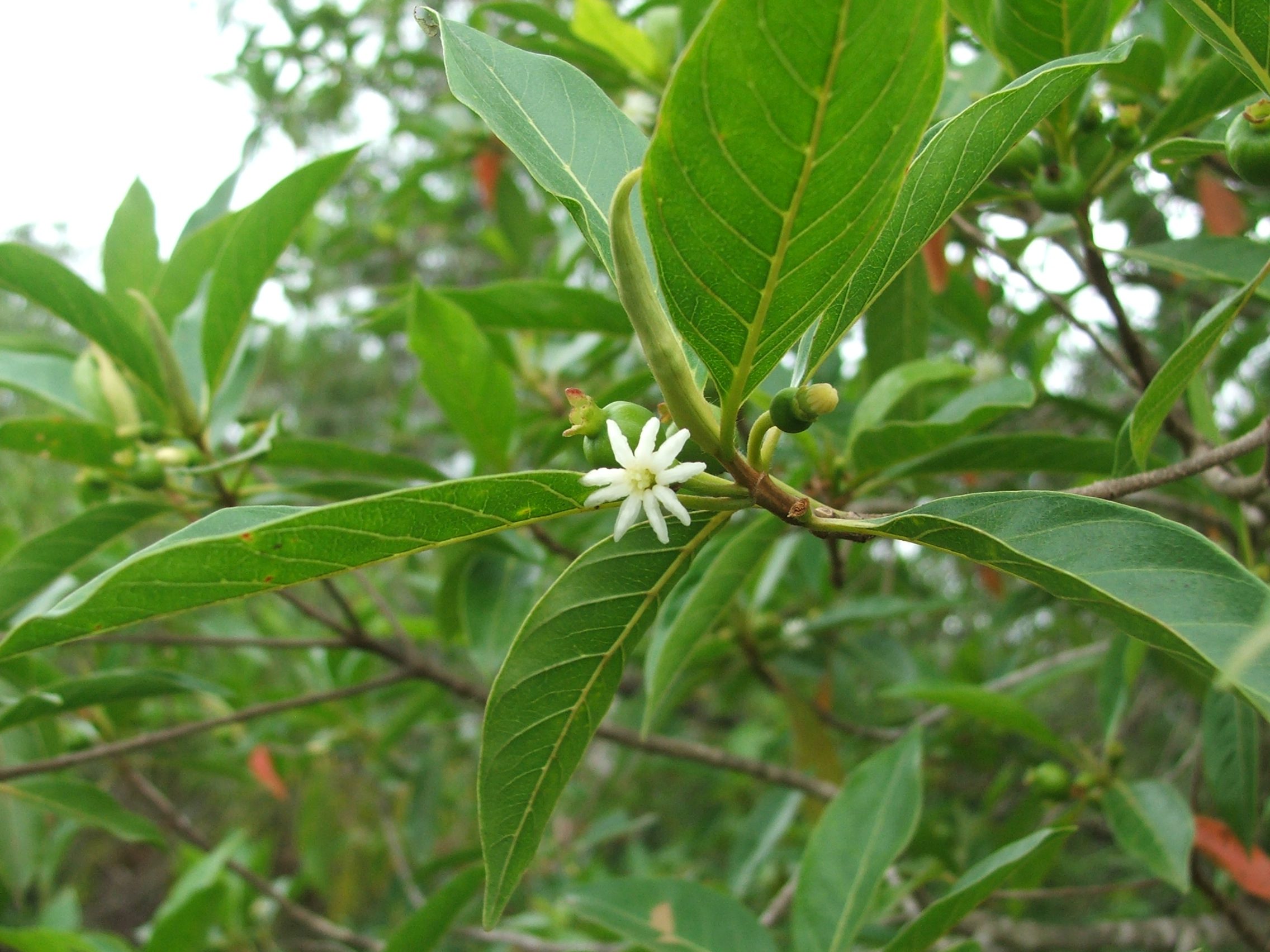Swizel bush
Timonius timon, Fam. Rubiaceae










Shrub or small tree to about 10m with light to dark grey black, rough, flaky to tessellated bark.
| Weed Category: | |
| Weed: | No |
| Form or habit: | Shrub, Small tree |
| Family: | Rubiaceae |
| Leaf: | Simple, opposite, entire, ovate to elliptic, 6-15cm long, glabrous or with silky hairs along veins and below, hairy domatia present. Young shoots often silky hairy. Stipules long, membranous, interpetiolar and leave a scar when shed. |
| Flower conspicuous: | Conspicuous |
| Flower colour: |
White |
| Flower description: | Small, white, silky hairy, fragrant flowers solitary or in small clusters. Mostly spring. |
| Fruit conspicuous: | Conspicuous |
| Fruit colour: |
Brown |
| Fruit: | |
| Fruit description: | Brown, globose, about 1.3cm in diameter with a persistent calyx. |
| Habitat: | Gallery (riverine or riparian) forest, littoral rainforest, rainforest. |
| Distribution | Queensland, Northern Territory, Western Australia, New Guinea, Melanesia, Malesia, Asia. |
| Food source for: | Fruit eaten by the northern and southern blossom bats. Nectar eaten by the dusky honeyeater. Larval food plant of the moths Coscinocera (Hercules moth) and Syntherata janetta. |
| Toxicity: | No toxicity known |
| Origin: | Australia, New Guinea, Melanesia, Malesia, Asia. |
| Notes: | Grow from seed. Some Aboriginal communities drank an infusion from the inner bark to combat colds, influenza and fevers, sore eyes were treated with a concoction from the wood. |
| Information sources: | Melzer R. & Plumb J. (2007) Plants of Capricornia. |